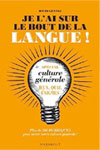Assessment, Evaluation, and Programming System for Infants and Children (AEPS(R)), Second Edition, Child Progress Record I: Birth to Three Years (Paperback)
Betty Capt
Vendeur
CitiRetail, Stevenage, Royaume-Uni
Évaluation du vendeur 5 sur 5 étoiles
![]()
Vendeur AbeBooks depuis 29 juin 2022
A propos de cet article
Description :
Paperback. This Child Progress Record was developed for use in conjunction with the AEPS (R) for children birth to 3 years to monitor individual children's progress over time. The simplicity of the form makes it appropriate for use by caregivers or professional staff. As children meet the stated criteria for a goal or objective, progress can be indicated by shading the particular skill. The Child Progress Record provides caregivers with a visual record of the child's accomplishments, current targets, and future goals/objectives and can be updated quarterly in conjunction with subsequent administrations of the AEPS (R) Test. This product is sold in a package of 30. This form is part of the bestselling AEPS system for children from birth to six years who have disabilities or are at risk for developmental delays. Thousands of programs across the country rely on AEPS for comprehensive, seamlessly linked assessment, evaluation, intervention, and programming. AEPS is criterion-referenced and curriculum-based, and with web-based data management through AEPSi (TM), it's easier than ever to assess young children and ensure that they make real progress. Much more than a measurement tool, the activity-based, field-tested AEPS links assessment, intervention, and evaluation for children from birth to 6 years who have disabilities or are at risk for developmental delays. With this reorganized, extensively updated second edition, early intervention professionals can assess and monitor six key developmental areas in young children: fine motor, gross motor, cognitive, adaptive, social-communication, and social. AEPS helps identify educational targets tailored for each child's needs, formulate developmentally appropriate goals, conduct evaluations to ensure interventions are working, and involve families in the whole process. AEPS Test results can also be used as a corroborating second source for determining a child's eligibility for services. AEPS components include AEPS Administration Guide. This guide includes a "Quick Start" section that makes AEPS easier for new users; instructions on collecting data and translating test results into IFSP/IEP goals and objectives; and guidelines for involving families, fostering team collaboration, and linking assessment, intervention, and evaluation. Appendices detail the psychometric properties of AEPS and include photocopiable data recording forms.AEPS Test: Birth to Three Years & Three to Six Years. The AEPS Test helps gather assessment data for one child or a group of children in home- or center-based settings. The tests for both age levels are divided into six developmental areas, each subdivided into strands of general skill areas, goals made up of skills in those areas, and objectives made up of smaller skills that build up to the goals. Professionals assess each area while childrenand their caregivers engage in everyday activities. Then, with the Child Observation Data Recording Form, professionals score each item with 0 (does not pass), 1 (inconsistent performance), or 2 (passes consistently). To supplement the scores, professionals can choose from five qualifying notes and add more specific comments. This multi-part scoring process lets users pinpoint what children can do, identify areas that need attention, and use that information as a starting point to develop IFSP/IEP goals and objectives. The Child Progress Record helps professionals create a visual display of the child's abilities and development by shading in goals the child has met, and the Family Report allows caregivers to add their own input.AEPS Curriculum for Birth to Three Years and AEPS Curriculum for Three to Six Years. These two curricula allow professionals to match the child's IFSP/IEP goals and objectives with age-appropriate, activity-based interventions th Shipping may be from our UK warehouse or from our Australian or US warehouses, depending on stock availability. N° de réf. du vendeur 9781557665867
Synopsis :
This Child Progress Record was developed for use in conjunction with the AEPS® for children birth to 3 years to monitor individual children's progress over time. The simplicity of the form makes it appropriate for use by caregivers or professional staff. As children meet the stated criteria for a goal or objective, progress can be indicated by shading the particular skill. The Child Progress Record provides caregivers with a visual record of the child's accomplishments, current targets, and future goals/objectives and can be updated quarterly in conjunction with subsequent administrations of the AEPS® Test.
This product is sold in a package of 30.
This form is part of the bestselling AEPS system for children from birth to six years who have disabilities or are at risk for developmental delays. Thousands of programs across the country rely on AEPS for comprehensive, seamlessly linked assessment, evaluation, intervention, and programming. AEPS is criterion-referenced and curriculum-based, and with web-based data management through AEPSi™, it's easier than ever to assess young children and ensure that they make real progress.
Détails bibliographiques
Titre : Assessment, Evaluation, and Programming ...
Éditeur : Brookes Publishing Company, Baltimore
Date d'édition : 2003
Reliure : Paperback
Etat : new
AbeBooks vous offre des millions de livres anciens, neufs, d'occasion et épuisés proposés par des milliers de vendeurs du monde entier. Acheter sur AbeBooks est simple, sûr et 100% sécurisé - effectuez votre recherche, passez commande sur notre site sécurisé et recevez votre ouvrage directement expédié par le vendeur.
Cherchez parmi des millions de livres proposés par des milliers de vendeurs
Livres anciens et de collection
Livres rares, manuscrits, incunables ou livres signés, découvrez notre page consacrée aux livres anciens et de collection.
Editions originales
Tirages limités, éditions spéciales ou numérotées, retrouvez notre sélection d'éditions originales.
Livres d'occasion
Meilleures ventes, idées lecture et lauréats à prix réduits, faites des économies grâce à nos bonnes affaires et à la livraison gratuite.



